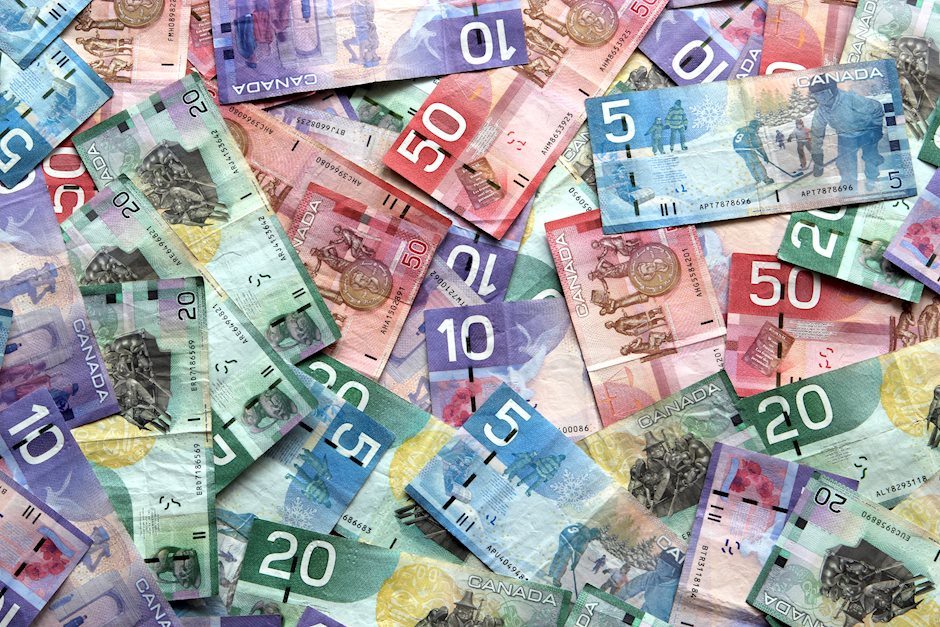USD/CAD moves toward multi-year highs above 1.4400 due to risk aversion, lower Oil prices
- USD/CAD appreciates toward 1.4467, the highest level not seen since March 2020.
- The US Dollar strengthened as the Fed may adopt caution regarding additional rate cuts.
- The commodity-linked CAD struggles due to declining crude Oil prices.

USD/CAD retraces its recent losses and edges higher toward 1.4467, the highest level not seen since March 2020, which was recorded in the previous session. The pair trades near 1.4410 during the Asian hours on Friday.
The US Dollar Index (DXY), which measures the value of the US Dollar (USD) against six other major currencies, maintains its position near 25-month high at 108.49, marked on Thursday, following key economic data from the United States (US).
US Gross Domestic Product (GDP) Annualized reported a 3.1% growth rate in the third quarter, surpassing both market expectations and the previous reading of 2.8%. Additionally, Initial Jobless Claims dropped to 220,000 for the week ending December 13, down from 242,000 in the prior week and below the market forecast of 230,000.
The US Dollar strengthened the Fed's emphasis on exercising caution regarding additional rate cuts. Fed Chair Jerome Powell explained that the central bank would be wary of further cuts, as inflation is expected to remain persistently above the 2% target. The Fed's monetary policy statement indicated that economic activity remained robust, while noting that labor market conditions had softened.
The Canadian Dollar (CAD) faces headwinds as expectations grow for further rate cuts by the Bank of Canada (BoC) in 2025, although the era of large, aggressive reductions may have passed. Additionally, declining crude Oil prices are pressuring the commodity-linked CAD, given that Canada is the largest Oil exporter to the United States.
Traders will closely watch Canadian October Retail Sales data on Friday. Meanwhile, in the United States, attention will focus on the Personal Consumption Expenditures (PCE) Inflation and the Michigan Consumer Sentiment Index.
Canadian Dollar FAQs
The key factors driving the Canadian Dollar (CAD) are the level of interest rates set by the Bank of Canada (BoC), the price of Oil, Canada’s largest export, the health of its economy, inflation and the Trade Balance, which is the difference between the value of Canada’s exports versus its imports. Other factors include market sentiment – whether investors are taking on more risky assets (risk-on) or seeking safe-havens (risk-off) – with risk-on being CAD-positive. As its largest trading partner, the health of the US economy is also a key factor influencing the Canadian Dollar.
The Bank of Canada (BoC) has a significant influence on the Canadian Dollar by setting the level of interest rates that banks can lend to one another. This influences the level of interest rates for everyone. The main goal of the BoC is to maintain inflation at 1-3% by adjusting interest rates up or down. Relatively higher interest rates tend to be positive for the CAD. The Bank of Canada can also use quantitative easing and tightening to influence credit conditions, with the former CAD-negative and the latter CAD-positive.
The price of Oil is a key factor impacting the value of the Canadian Dollar. Petroleum is Canada’s biggest export, so Oil price tends to have an immediate impact on the CAD value. Generally, if Oil price rises CAD also goes up, as aggregate demand for the currency increases. The opposite is the case if the price of Oil falls. Higher Oil prices also tend to result in a greater likelihood of a positive Trade Balance, which is also supportive of the CAD.
While inflation had always traditionally been thought of as a negative factor for a currency since it lowers the value of money, the opposite has actually been the case in modern times with the relaxation of cross-border capital controls. Higher inflation tends to lead central banks to put up interest rates which attracts more capital inflows from global investors seeking a lucrative place to keep their money. This increases demand for the local currency, which in Canada’s case is the Canadian Dollar.
Macroeconomic data releases gauge the health of the economy and can have an impact on the Canadian Dollar. Indicators such as GDP, Manufacturing and Services PMIs, employment, and consumer sentiment surveys can all influence the direction of the CAD. A strong economy is good for the Canadian Dollar. Not only does it attract more foreign investment but it may encourage the Bank of Canada to put up interest rates, leading to a stronger currency. If economic data is weak, however, the CAD is likely to fall.
Author

Akhtar Faruqui
FXStreet
Akhtar Faruqui is a Forex Analyst based in New Delhi, India. With a keen eye for market trends and a passion for dissecting complex financial dynamics, he is dedicated to delivering accurate and insightful Forex news and analysis.

















